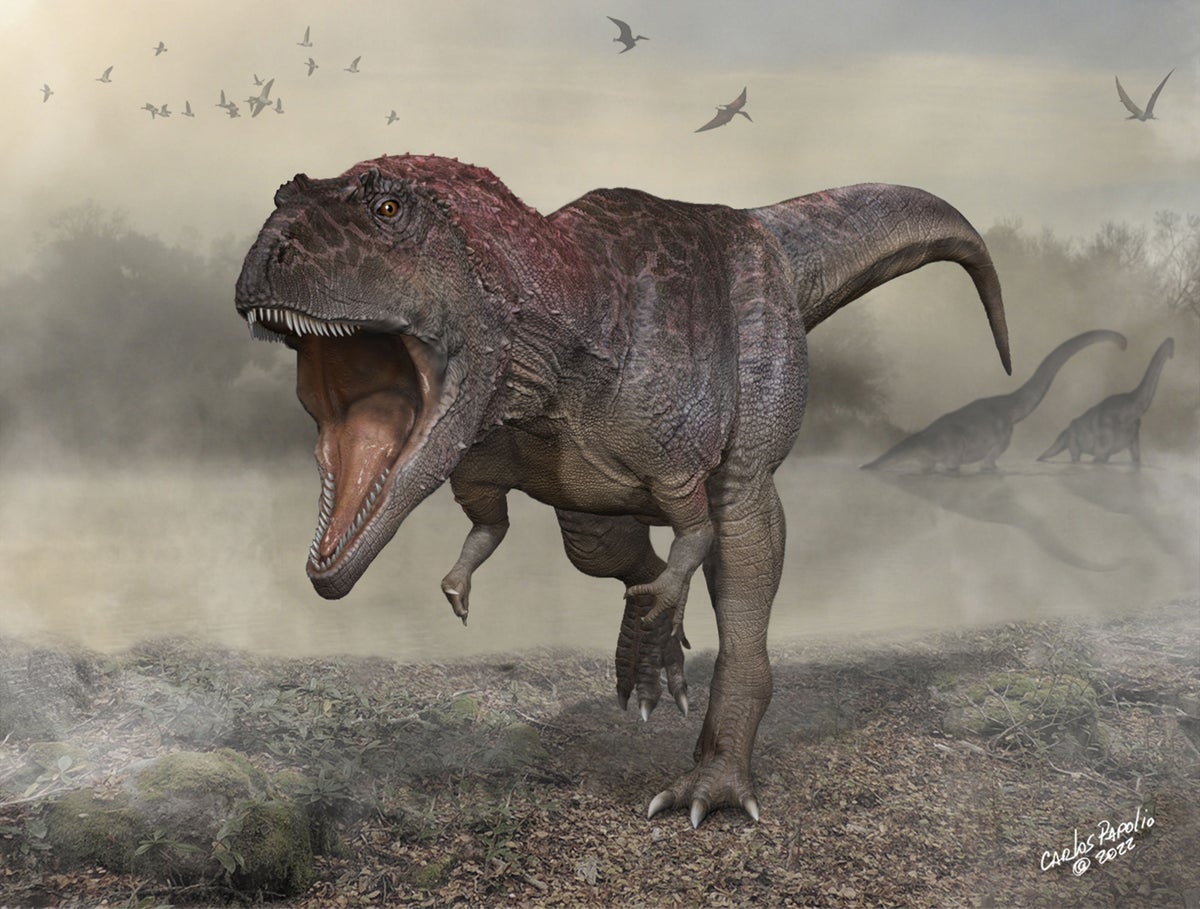Study finds why some dinosaurs were massive while their close relatives were tiny

The body size of some dinosaurs is not linked to their growth rate, according to a new fossil analysis that sheds light on why some like the mighty predator T rex were massive while their close relatives were tiny.
For long, paleontologists have known that meat-eating dinosaurs called theropods ranged in size from the bus-sized T rex to the smaller, dog-sized Velociraptor.
But how such dinosaurs evolved into such wildly different sizes even between closely related species has remained elusive.
Now researchers, including those from Ohio University in the US, conducted a large-scale analysis of dinosaur shin bones, looking at their speed of growth based on the rings laid down each year in their bones.
As dinosaurs slowed or paused their growth every year, it left marks like tree rings on their bones that indicate their age and can be used to estimate their rate of growth.
“Rings like these are called cortical growth marks. Widely spaced rings indicate faster growth and narrowly spaced rings tell us that an animal was growing more slowly,” study co-author Michael D D’Emic explained.
Until now, researchers have held that large animals like elephants have such a huge size as they grow much faster during their most rapid period of growth compared to smaller creatures like dogs.
Similarly, paleontologists predominantly believed large dinosaurs got big due to rapid growth spurts.
The findings, published on Thursday in the journal Science, revealed that there was no relationship between growth rate and body size of some dinosaurs.
Researchers found that in some dinosaurs, such as the 7-metre-long T rex relative Majungasaurus, the growth rings were narrow, indicating that they grew big over a long period of time.
Scientists now believe nearly a third of the 42 theropod species assessed in the study were larger than their ancestors likely because of faster growth and another 28 per cent due to prolonged growth.
About a fifth, they say, may have become smaller than their ancestors by shortening their growth spurts, and another fifth by slowing growth.
“Most animals are thought to evolve to be larger by growing faster than their ancestors, but this study shows that it’s just as likely that bigger and smaller animals grew for longer or shorter periods of time during growth spurts,” Dr D’Emic said.
In the research, scientists measured about 500 such growth rings in about 80 different bones of theropod dinosaurs – the two-legged, mostly meat-eating species of dinosaurs that is closely related to birds.
The results suggest there was no one-size-fits-all mechanism behind theropod dinosaur growth.
Researchers say the alteration of different growth mechanisms at molecular or genetic levels likely accounts for the range of developmental strategies seen in these dinosaurs.
“We found that there was no relationship between growth rate and size. Some gigantic dinosaurs grew very slowly, slower than alligators do today. And some smaller dinosaurs grew very fast, as fast as mammals that are alive today,” Dr D’Emic said.
“Hopefully this research spurs investigations into other groups, both alive and extinct, to see what developmental mechanisms are most important in other types of animals,” he added.
For all the latest Science News Click Here
For the latest news and updates, follow us on Google News.

